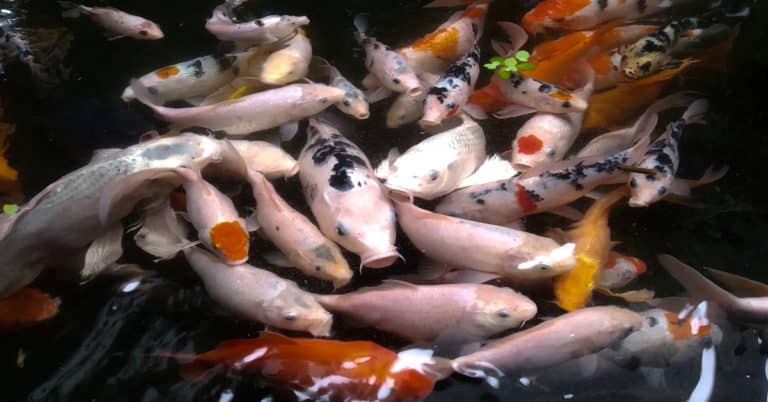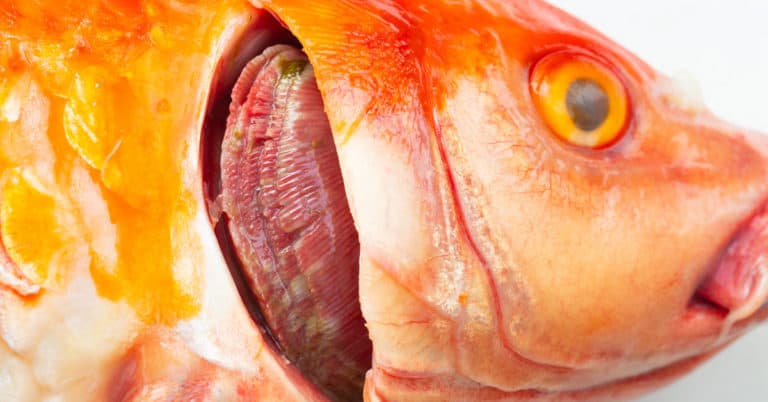Koi are known for their unique colors and patterns that liven up a backyard pond, so having a fish with little to no color adds an unusual pop.
All varieties of koi have their own traits and standards when it comes to patterns and markings, and owning them is just a step up from an average goldfish.
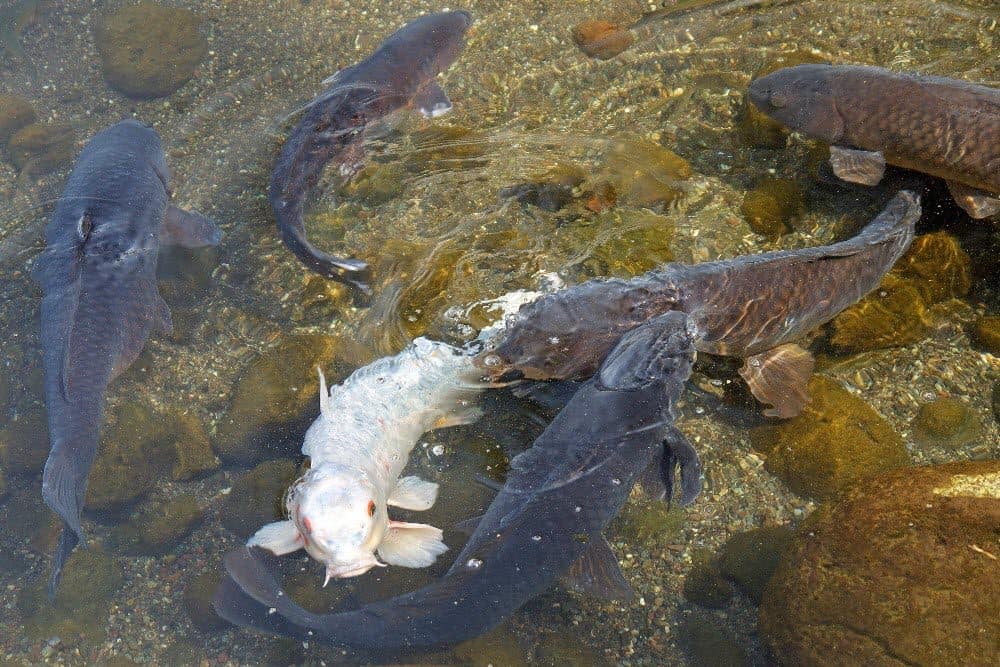
We will discuss the different kinds of koi and why they might be pure or primarily white in color. There are various reasons, but most lie in genetics and species.
We will also be looking at why and what you can do to purchase or avoid having them in your pond.
Koi fish are descendants of koi carp, carefully bred and domesticated from Japan. Now, there are dozens of varieties and even more colors and shapes. Japanese koi fish have pedigrees going back centuries, but most koi hobbyists don’t immediately spring for the expensive bloodlines.
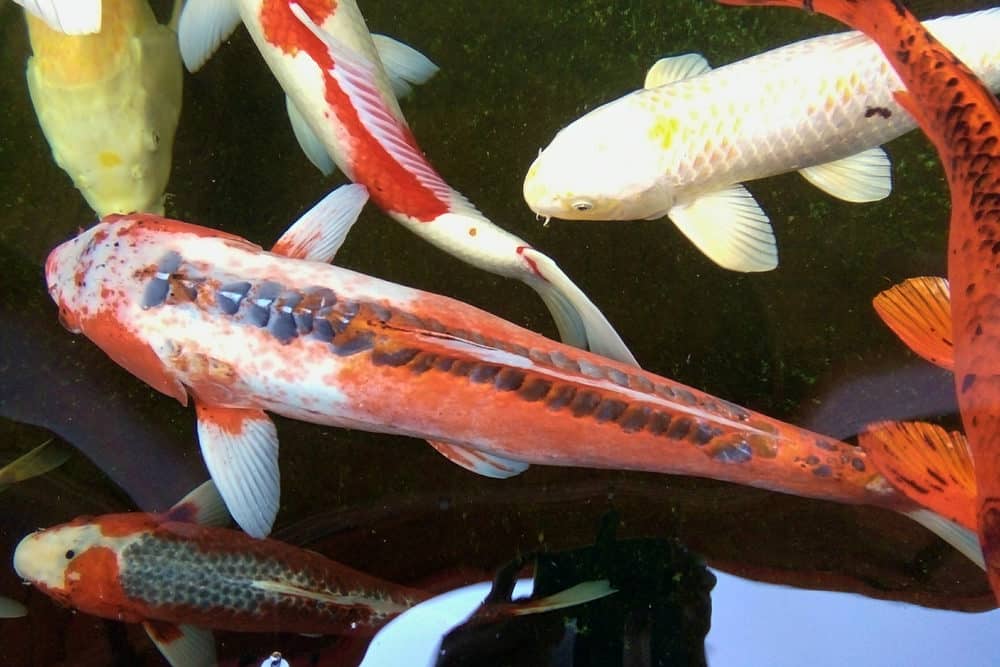
White koi can come from several types of koi, simply lacking the traditional patterns. There are pure white koi fish that have a more metallic finish to their scales or a matte finish. The astounding amount of koi variety makes almost any color combination possible, including all white without the desired pattern.
These koi fish have a white base to their body with reddish/orange markings all over. They are one of the most common koi types, and because of the specific criteria for these fish, when all white or primarily white koi spawn, they are culled to try and keep the patterns pure.
White kohaku koi are called Shiro Moji, and they are a matte white and void of any red patterns generally associated with kohaku. These fish don’t have any metallic shine to their scales and can be a crisp white without albinism.
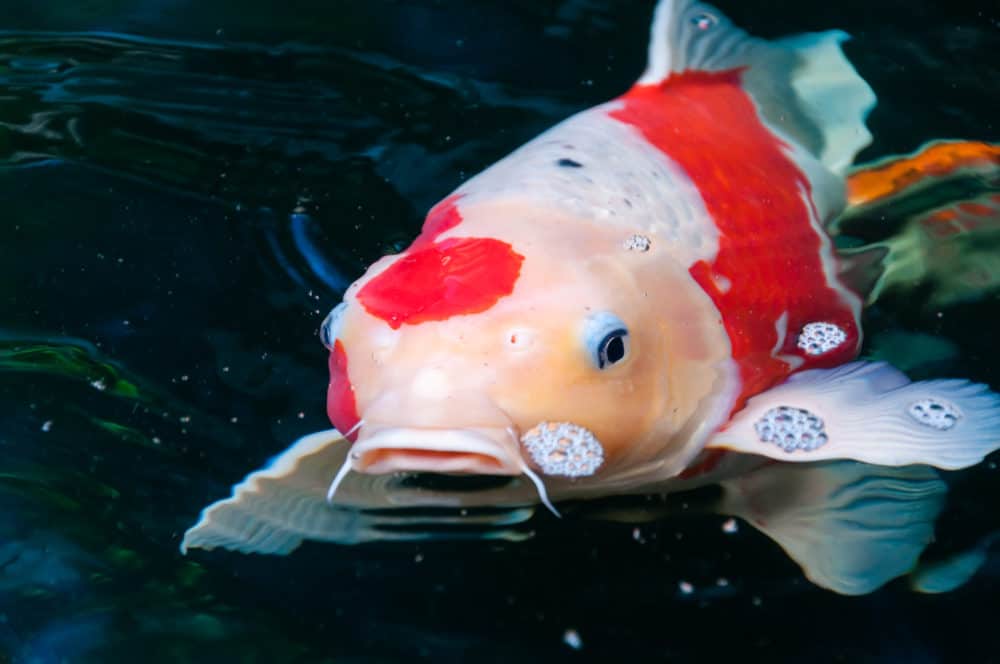
White kohaku are caused by genetics, and looking at a fish’s pedigree or buying a mature fish will help you know whether or not the fish will maintain its pattern or throw more or less color.
A highly sought-after pattern of Kohaku koi is called a tancho. This specific look is when the fish is all white except for a symmetrical red shape on the top of its head. It requires symmetry and a bright white body to be considered a true tancho.
With albinism, there is a chance for any type of koi to be pure white. These are rare and sought-after fish with token red eyes. It’s very easy to tell that a fish is an albino rather than lacking any pattern.
It is purely a genetic mutation, one which can be found from humans to the smallest animal.
These are beautiful, metallic white koi fish. They are their own species and are the most consistent way to have a white koi in your pond since they are bred for the pale color.
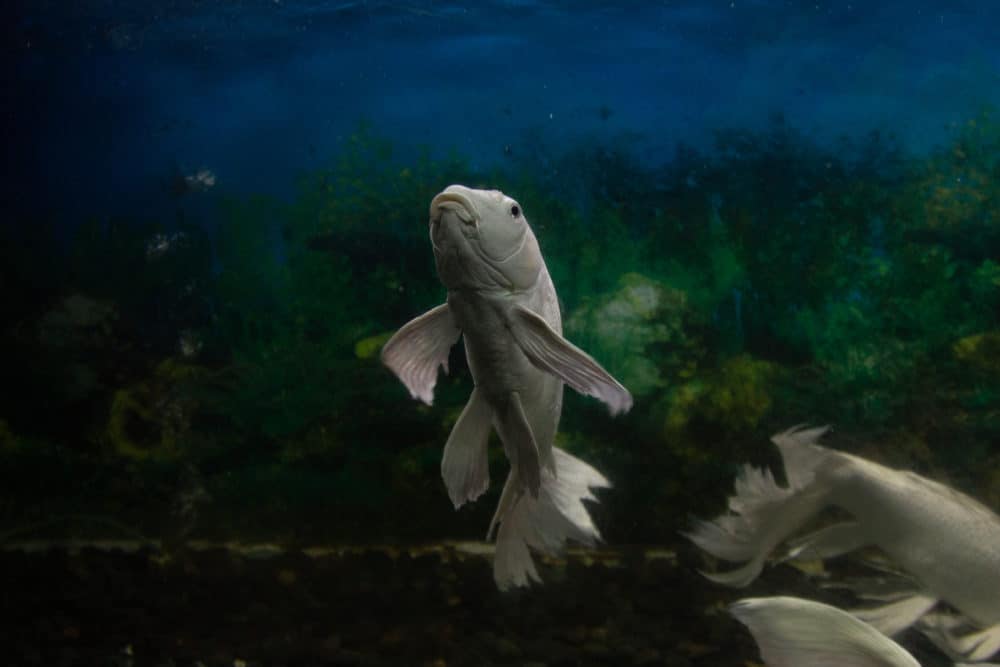
Their scales are highly reflective, and the white needs to be consistent and unblemished all over the body, especially the head. The platinum ogon has multiple hues, but its clear white color is the most desired.
This fish resembles a kohaku, but instead of a white and red pattern, there are splotches of black all over its body. Since a sanke koi has a white base, it’s possible for it to be born with very few markings. It is to have a mixture of white, black, adn red markings defined over its body.
The lack of markings makes it less desirable as a specimen, but the white color, when unblemished, makes for a stunning addition to a pond for any koi hobbyist.
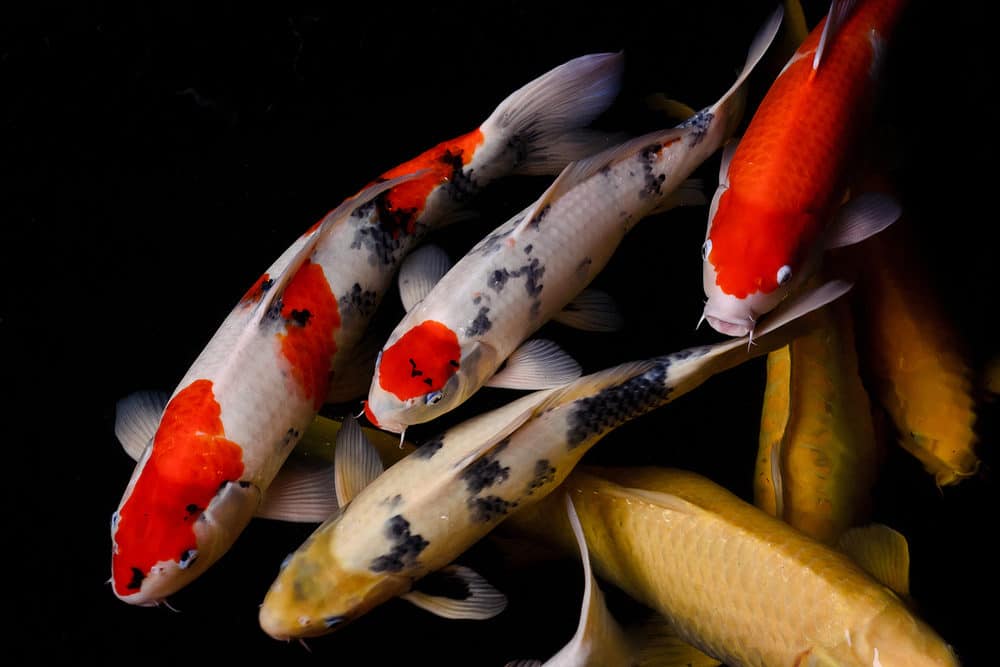
This title might seem a bit spooky, but this koi originated from a cross between a wild carp and a platinum ogon. Its colors can range from dark, shimmering gray, to a more platinum color that fits into the category of a white koi.
As we’ve discussed, a predominantly white koi can come from a genetic mutation, selective breeding, or a unique pattern that can occur at random.
There are several factors that may lighten the color of your koi over time or during a season, so it’s important to know what to expect and look out for when choosing fish for your koi pond.
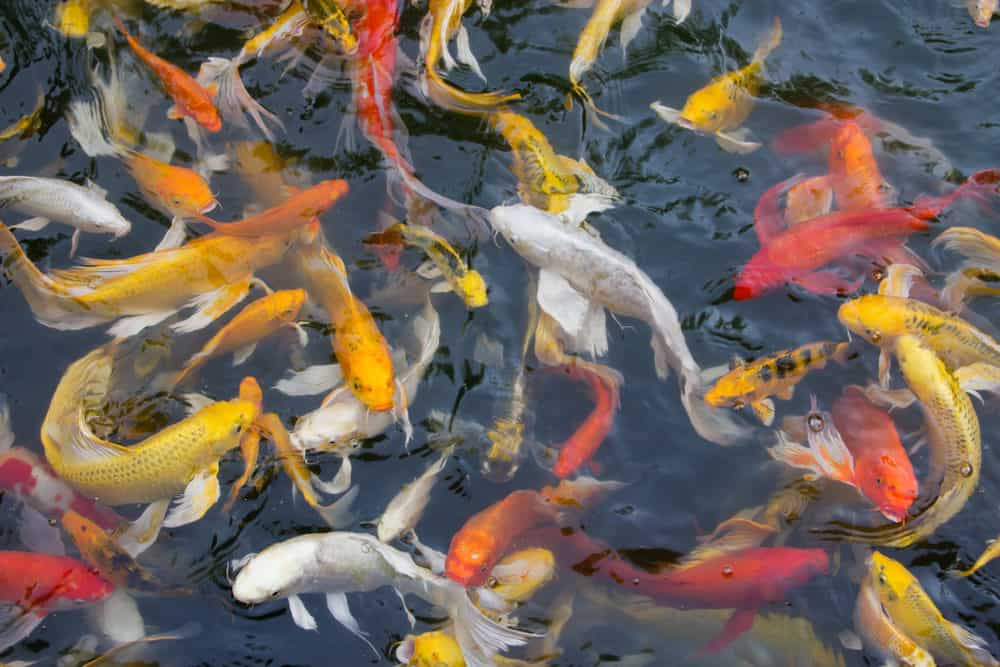
If you get your koi as babies, their true color pattern won’t be revealed entirely. Patches of orange can turn almost white with age, and their overall colors can fade, leaving you with a much paler koi than anticipated.
Their colors shift and change over time, so you can’t be 100% sure of what your adult koi will turn out to be.
By looking at the parents and lineage, you can usually gauge the general outcome. Koi colors and patterns are largely genetics based.
Color changes can occur from poor health as well. If your white koi is suddenly turning yellow, it might be time to check the water and see what’s going on. The vibrancy and quality of your koi’s color and scales can be the first indicator something is wrong in their habitat.

This is even more visible on a white koi since every tone and blemish is noticeable.
All koi have brighter colors in colder water. They tend to be healthier in general when the water is crisp, so a pale fish can become blindingly bright if the water temperature is lower. As seasons change, the water follows, and the pond fish adapt and change to keep up.
Your fish could have a very different tone depending on the seasons.
Koi fish have been significant in Japanese and Chinese cultures for thousands of years. These fish are tied with life and its meanings.
A white koi fish can represent success within a career, fortune, and strength.
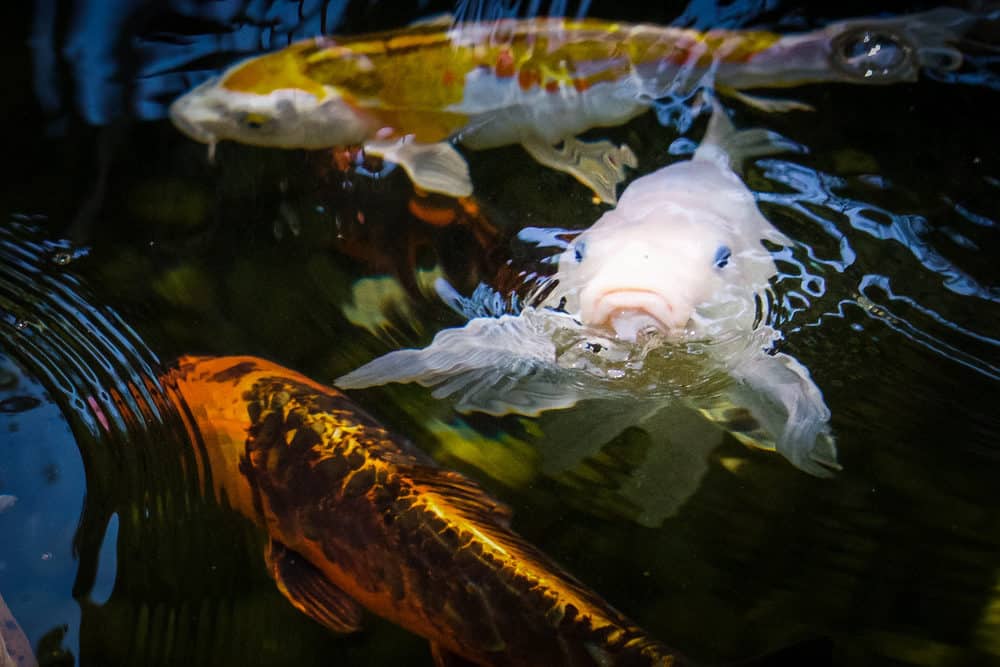
Like all koi, they are susceptible to plenty of predators in the outside world. White koi are at a significant disadvantage, though.
Their darker skin can blend in with the stones of the outdoor koi pond while their bright, shining scales are practically a signal to all predators where they are. If they move in a school, having that highlighted target can mean trouble for the rest of them.
Many koi breeders cull the white koi to keep only the brightest and strongest patterns. The lack of colors and decoration can be seen as a flaw or as a desirable trait.


